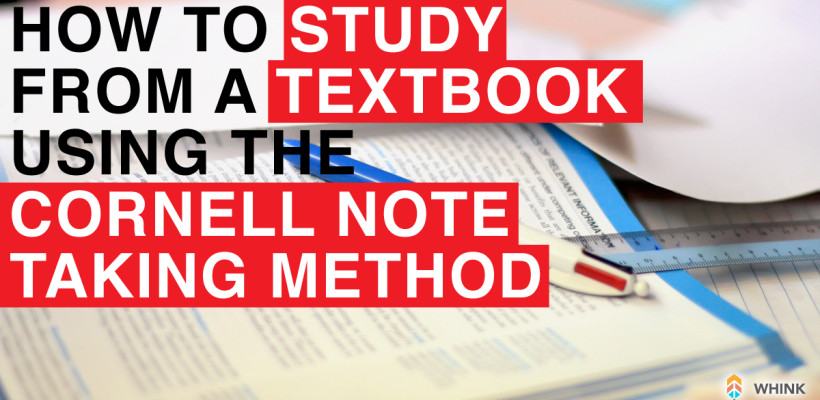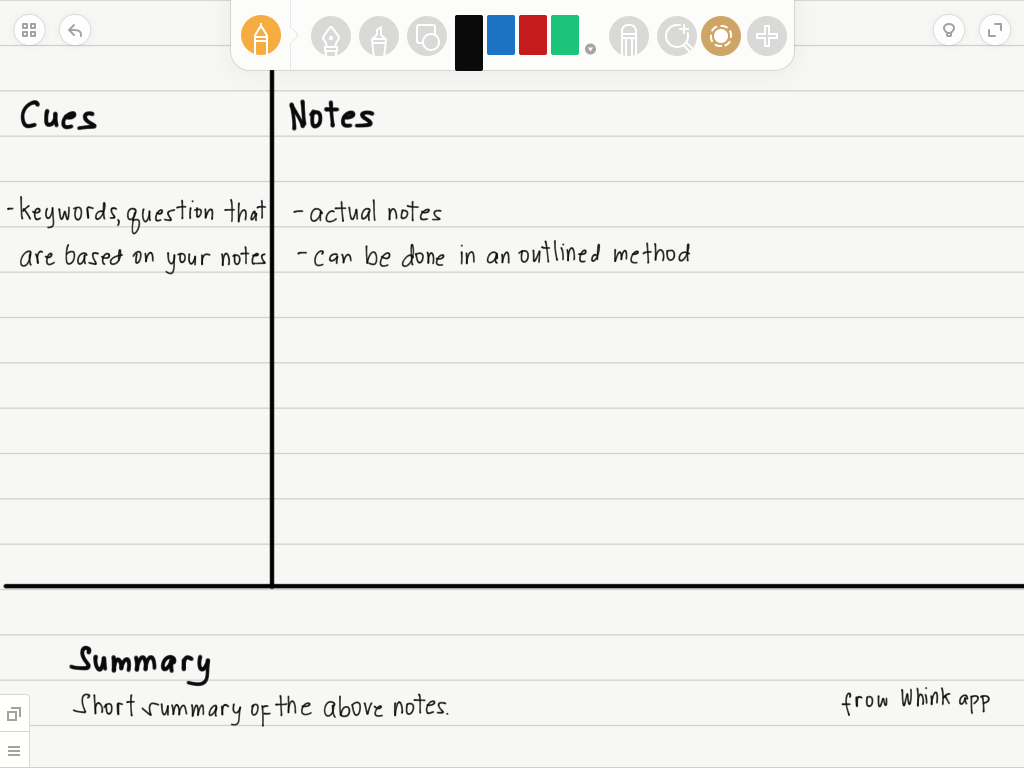
The Cornell Note Taking Technique is one of the most popular and effective methods for taking down notes for all kinds of subjects. It’s especially useful for studying and taking notes right from a textbook.
We’ve covered the skeleton basics of the Cornell Note Taking Method in our previous post but this time, we’d like to point out techniques on how to use this particular note taking strategy in reading and studying your textbook materials.
1. Skim textbook chapters.
Skim the chapter title, section titles, headings, sub-headings and even its pictures+captions, tables, diagrams, highlighted/ boxed/ capitalized/ bold/ italicized text. Skim also the first and last sentences of each paragraph/ section and the chapter summary, if the chapter has one.
This will give you a main idea about the chapter, it will give you a gist of what you need to read. We recommend to just do this one chapter at a time and not scan the entire book on one sitting or it will become a tedious activity for you.
2. Prepare your Cornell notes pages and writing materials.
We highly recommend that you use a note-taking app for taking notes from your textbook as (a.) it’s easier to edit your notes (b.) it’s more convenient to adjust and provide more spaces for your notes. (c.) it’s more practical to have, especially if you have several classes.
If you’re not comfortable using a note taking app yet, that’s still fine, you can still take notes properly using a regular paper notebook, a pen and some highlighters. If you don’t want the hassle of manually preparing a page, you can buy Cornell note taking pads online or you can print and DIY your own Cornell notebook by using this method.
Preparing your Cornell note pages manually, is easy though. Just divide the paper into three sections, the bigger, right side for the note-taking section, the right side for the cue/ question and the bottom part for the summary.
And here’s a tip: make your Cornell note page into a landscape page. That way, you’ll have more space for note taking. Also, if you’re writing on a paper notebook, just write on one side, don’t write at the back just yet. You might need the extra space for later.
See sample below:
The notes section should have the biggest space. The cue section can have a space of 2 1/2 margin from the side and then leave enough space for the summary.
Next is where the real work starts.
3. Write down textbook chapters and sections.
Read again the chapters, section titles, headings, sub-headings, etc. and by now, you will have at least a better idea of what the chapter and section pages are all about.
On your Cornell note page, write first the date, chapter title and page no. on top.
Then on the notes section, write the section title of the textbook and leave a few spaces in between.
You will be writing key information on those spaces so better read again the headings, sub-headings, the opening and last sentences of each paragraph and even the picture captions and highlighted texts, just to gauge how much space you’d need for the information. By now, you’ve read the key points of the chapter thrice, making it more or less intimidating to study for later.
3. Read one section then take down key information.
Start reading one entire section then take down only the key information. Don’t write down everything on your notes.
It is actually advisable that you just write down one or a two sentence summary of an entire section in your own words, so as to have a really better understanding of what you just read.
Then place the other details later. Write down important dates, people, important events, definitions etc. in a bulleted form so as to easily read and grasp the information but make sure to only write key and relevant information. Minor details can be also be written in an indented form, with dashes, numberings, etc. You can also draw shapes, small diagrams or images if that will aid you in remembering the information.
4. Write questions on the Cornell “cue” section page.
Say you’ve finished writing down the main idea and key points from one section. You can now go over to the cue section where you’ll jot down your questions based on what you’ve written.
The purpose of this is for reviewing and studying your notes later. The questions will help in recalling the lessons plus in formulating your own question, it would make the lesson more meaningful and clearer for you. That’s what the Cornell note taking technique is for.
(If you’re taking notes from a history subject, there’s a PIRATES question tip from SanchezWorldHistory. It helps you formulate questions based on the code PIRATES: politics, interactions, religion, arts and culture, technological development, economic development and social structures.)
Since you already have a summary of one section and the key information underneath it, you can easily form your questions based on that. Ask first the main question which is based on the section title.
Then ask the 5W+1H questions if it’s applicable and if it’s relevant: who, what, why, when, where, how. You can also formulate one big question that will address those items. Remember to only take note and write down questions based on the key information you’ve written on the note-taking section.
5. Read again the material and highlight key information.
You might have missed some things the first time you’ve read the material so better read the sections again then take down added notes. Add notes and highlight them if needed. You can create your own highlighting system if you prefer, so as you can easily review specific notes.
Say for example, you use an orange highlighter for marking a person’s name, green highlighter for events, and so on and so forth. When you see an orange highlighter, you will immediately think that its reference to a person and it will help you remember the subject easier.
6. Study the material by answering your own questions.
Now that you’ve finished reading one section, writing your notes and the questions about it, it’s time to review what you just learned.
Cover the notes section with your hand or another paper or fold them if you want, then go through your questions and try to answer all of them. Now check your notes section if you’ve answered the questions correctly. If you’ve missed a question, read up that part in the section then look at your notes to highlight the key information that you weren’t able to answer.
Do this again and again, out loud if you must or study the material with a classmate, until you can confidently answer all the questions you’ve formulated.
7. Rinse and repeat the steps in other sections.
Do the same step in other sections until you’ve finished one whole chapter of the book. Make sure you’ve answered all the questions you’ve formulated and if not, just keep going back to your notes, highlight, indent, add dashes, bullets, etc. until you’ve covered the key points of the whole chapter.
8. Make your own chapter/ section summary.
At the bottom of your Cornell note page, write down the summary of each page of your notes OR write the summary of the entire chapter. Use your own words in writing them so as to see if you really understand the whole chapter.
9. Rinse and repeat until you’ve finished the whole textbook.
By then, you’ll basically have your own version of the whole textbook. Remember to clip and label your notes properly and place them in a folder or binder so you won’t lose them.
Study every day but don’t do this for 4 hours straight or else, you’ll get mentally and physically tired. Space out your study time within the day, do it for 1 hour in the morning, another hour in the afternoon then 2 hours at night. Remember also to write your notes neatly, otherwise you won’t be motivated to study them plus you may not understand some of what you wrote.
Combine the Cornell note taking technique with other note taking methods if you prefer and tweak it accordingly. It will take time to get used to this method, but this will greatly help you in reading and studying your textbook.
Download Whink here
Like us on Facebook
Follow us on Twitter
Watch us on Youtube



[…] Read full article here. […]